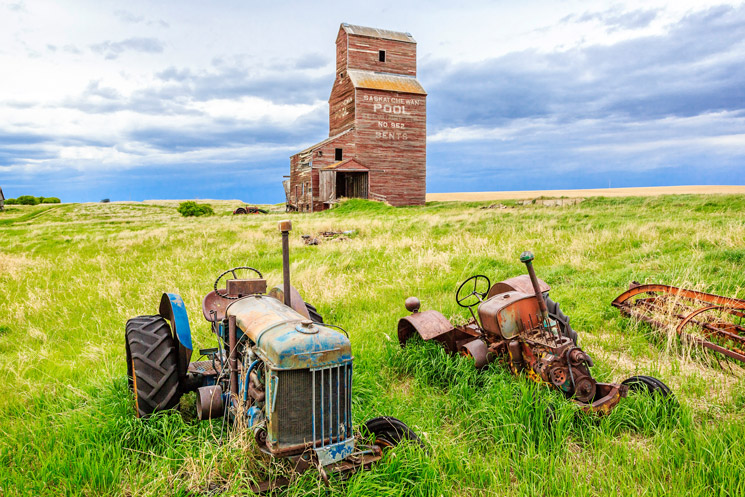Seven Regrets in Grain Handling Systems Planning and Construction
Planning to invest in a new stationary grain handling system? Here are the top regrets from people who have built their systems.

Planning to invest in a new stationary grain handling system? Here are the top regrets from people who have built their systems.
by Greg Ver Steeg, Vice President of Sudenga Industries
When considering the spouting in your bucket elevator system, the words “I think I can get by with…” should never cross your mind. Many people often attempt to save money by installing a spout system with a lower capacity rating. Although this may cut costs initially, it is important to remember that capacity ratings are usually calculated using prime conditions. Multiple variations in material condition and moisture can quickly make a spout too small, causing all kinds of havoc for the equipment feeding the spouts. To avoid potential damage to your bucket elevator, select a spouting size that features your system’s capacity rating in the middle of its range.
Another similar issue to avoid when you plan your spouting is to make sure your elevator leg is tall enough to maintain proper spout angles. It might be tempting to settle for a shallower angle on some of your longer spouts to decrease your discharge height (and therefore decrease cost). Unfortunately, a spout that is at too shallow of an angle will be a system bottleneck nightmare that could lead to repair expenses in the future.

Although your primary reason for building a new grain handling system may be to unload your grain faster, don’t forget to be mindful of additional goals or challenges that you would like your new system to address. These objectives can include issues like system cleanout, handling different grains without cross-contamination, dust control, or even limiting the number of times your drivers need to get in and out of their trucks. By being aware of your goals from the start, you set yourself up for success early, allowing your initial design to accommodate many or all of your needs upfront. Often a combination of different equipment will be the ideal solution to address and accomplish your goals.
Although it’s quick and efficient to empty the entire contents of your grain trailer into a 1000-bushel grain pit, such a pit requires a deep hole. Before you consider your new grain pit system, you should ask yourself: “Have I planned for groundwater?”. It’s an unavoidable fact that groundwater doesn’t simply disappear over time, and actually these issues tend to only get worse. If you aren’t committed to handling groundwater every day for the life of that system, consider a grain-receiving system design that keeps all your equipment on or above ground.

From the moment grain enters the combine to the minute it is processed for use, grain is moved at multiple points throughout its life. Every motion is an opportunity for damage, and a good grain handling system should account for that reality. Choose equipment that is bigger, but moves material at a slower feet-per-minute rate. Slower equipment will typically move material more gently.
Also, be sure to install velocity controls and impact reduction devices in your system’s transitions. Skipping out on these important add-ons will likely lead to more damaged grain. Make sure to limit changes in direction, and minimize the number of long, uncontrolled drops in your grain handling system. Often compromises need to be made between handling speed and minimizing damage. Grain damage control is the result of careful equipment selection installed with proper safeguards.
Adding more storage or a dryer? Taking on more acreage? Planning to batch your own livestock feed? You don’t need to build your entire dream system today, but you should certainly begin planning for it. Develop your complete plan from the start. It isn’t impossible to phase your way into your ideal system and control costs, but it’s much easier to accomplish when you begin with a master plan. It may be tempting to skip that site survey and soil testing, but beware—there’s no turning the clock back once you’ve started your project. Designing footings for your soil type and sizing equipment for site elevation changes can save time and money in the long run.

We all like to save money, but sometimes the compromise isn’t worth the savings. For example, attempting to work with an existing concrete trench or increase the discharge height and capacity of an existing bucket elevator both may seem alluring, but there comes a point where you’ll be disappointed with the results, and the cost savings won’t have been worth it. Consider the reasons you might be building a new grain handling system in the first place: faster throughput, better quality grain, less maintenance, and more convenience. If the equipment or layout you are trying to reuse doesn’t achieve your set goals, move on. Remember that a well-designed and efficient grain handling system can help improve your bottom line and streamline your operations, making it a valuable long-term investment.
It’s tempting to buy your grain handling system solely based on price, but there are additional factors to consider. It would be very troublesome to use a contractor you can’t get along with, or a supplier you don’t trust. Here are five questions you should ask yourself before deciding on who should implement your new grain handling system.
Chances are you’ll need to continue these relationships even after the project is completed. In the end, you won’t regret both trusting your gut AND formally verifying the dependability of your supplier and contractor before signing on the line.